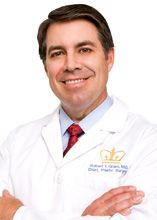Top 5 Liposuction Myths
Robert T. Grant, MD, MSc, FACS, debunks the top 5 myths he has faced on liposuction, as well as the facts every patient should know before undergoing the procedure.

When a patient walks in for their first liposuction consultation, I’m occasionally reminded of a quote from a wise man: “Jim, I’m a doctor, not a miracle worker!” But the reason for this isn’t as facetious as you may think.
As cosmetic surgeons, we can only do so much with the tools and cutting edge liposuction techniques that we possess. Patients often have pie in the sky misconceptions of liposuction that contrast with the reality of the procedure’s benefits and the time when it is truly needed.
Here are the top 5 myths I’ve faced on liposuction, as well as the facts every patient should know before undergoing the procedure.
#1. Liposuction is ideal for dramatic weight loss.
A prime candidate for liposuction is actually one who possesses a comprehensive diet and exercise routine, yet is unable to get rid of those problem areas. Call saddle bags, muffin top, bat wings, and thunder thighs what you will, but those targeted trouble zones where a patient has 5 to 10 pounds of fat that he or she cannot lose are the best medical cases for a liposuction procedure. I’ve often turned away patients who sought out a dramatic weight loss with liposuction, as the results would not look natural and, most importantly, the procedure would not be medically safe.
#2. Liposuction removes cellulite.
Regardless of their shape or body type, many patients I see are concerned about cellulite. Unfortunately, liposuction is not the answer. Cellulite develops when the connective tissues beneath the skin that shape fat contract and harden, resulting in areas where the skin is held down while other sections bulge out, which creates a lumpy cottage cheese appearance. In some cases, I’ve advised patients with poor skin elasticity that excessive removal of superficial fat can potentially worsen the appearance of cellulite.
#3. Liposuction prevents future fat growth.
When a patient elects for a liposuction procedure for a targeted problem area, you are actually removing fat cells from that part of the body. So, if patient would normally gain weight in that problem area, there would be no fat cells to absorb the fat there, but it would travel to another part of the body to be absorbed.
#4. Liposuction gets rid of stretch marks.
Stretch marks are caused by excessive stretching, breakdown, and separation of the deep layers of skin and is indicative of poor skin elasticity. In fact, post-liposuction areas that have many stretch marks will not have the smoothest and tightest look after the procedure.
#5. Liposuction makes diet and exercise a thing of the past.
A patient must look at a targeted liposuction procedure as simply a step in achieving their ideal body image, and not the sole solution. Excessive post-liposuction weight gain will produce unflattering results. Conversely, a health regimen consisting of a sensible diet and workout plan will help in the post-liposuction healing process and maintain desired results long-term.
Despite those facts, there is no denying the positive impact that liposuction can have. Aside from the procedure’s esthetic benefits, reduction of body fat in any way helps contribute to lowering cholesterol, regulating insulin requirements, and reducing the risk of heart disease and certain types of cancer. With more than 200,000 liposuction procedures performed annually, the procedures clearly generate great benefits for the vast majority of patients who elect to undergo it.
Robert T. Grant, MD, MSc, FACS, is Chief of the combined Divisions of Plastic Surgery at New York-Presbyterian Hospital-Columbia University Medical Center and New York-Presbyterian Hospital-Weill Cornell Medical Center. He is also Associate Clinical Professor of Surgery in the College of Physicians and Surgeons at Columbia University and Adjunct Associate Professor of Clinical Surgery at Weill Cornell Medical College. For more information about Dr. Grant or to contact him, visit his website at www.robertgrantmd.com.